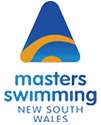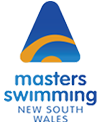This is the fourth in a series of columns designed to help you swim at your best at meets, or just appreciate your swimming experience more.
I had intended to write an appraisal of a relatively new ‘type’ of training, Ultra Short Race Pace Training (‘USRPT’), but for a range of reasons have decided not to. One reason is my lack of scientific knowledge about any factors that may affect the relevance, application and value of USRPT for Masters swimmers, especially older Masters swimmers. And I do have some reservations about USRPT and its principal proponent. I am happy to discuss my thoughts on USRPT with any Masters swimmers who would like to contact me.
Instead I would like to talk about pace judgement in races.
Having watched countless thousands of swimming races as a swimmer and coach over more than 50 years, I am absolutely convinced that the single biggest factor in a swimmer swimming as fast as they are capable of in any race is how well they pace their race. Proper pace judgement means swimming any race at (relatively) even speed. In 50 metre races this generally permits maximum effort from the start, although for some older (or slower) Masters swimmers it may be prudent to spend the first 5-10 metres building to maximum speed and ensuring one has ‘hold’ of the water. So what follows is largely applicable to distances of 100 metres and longer.
The examples of Australia’s only two individual gold medallists at the 2016 Olympic Games are instructive: In winning the 100 metres freestyle, Kyle Chalmers split 23.14 for the first 50 and then 24.44 for the second. This means that, allowing for the dive, he swam at the same speed for the entire distance. In winning the 400 freestyle, Mack Horton actually ‘negative split’ the race, swimming the second 200 faster than the first 200.
The justification for swimming at even speed can be summarised in three related reasons. Firstly, with finite energy reserves it makes perfect sense physiologically to ration that energy evenly across the full distance rather than emptying your tank before the end, or having to ‘back off’ during the middle of the race in order to finish strongly. Secondly, if too much energy is expended early, technique and therefore efficiency degrades, further slowing speed. Thirdly, it is psychologically damaging to be turning at the halfway or latter stages of a race, knowing that the remainder of the race is going to be a real struggle. This psychological negative can further exacerbate the physical decline.
Due to the increasing fatigue in a race even speed requires gradually increasing effort, so there needs to be sufficient energy reserves to enable this progression of effort. It is instructive to see yourself as having ‘gears’ that one goes through throughout the race, for example four gears, one for each quarter of a 200 or 400 race. The aim should be to develop an internal ‘operating system’ that always provides progressive energy expenditure irrespective of your level of fitness or other variables. It isn’t hard to do with practice in training and competition! In training whether you are swimming at maximum effort or not, always swim any repeat with even pace and practise how you need to feel at the various stages of every distance to ensure progressive energy expenditure and even speed (see ‘Take Your Mark No.3 – Race Pace, Race Feel).
The same principles of progressive energy expenditure also apply to individual medleys, although this will not result in even speed.
An important way of conserving energy early and rationing energy evenly is swimming the early stages of races with a slower stroke rate, concentrating on executing long, smooth, efficient strokes, and then trying to gradually increase stroke rate. In reality your stroke rate may not increase as fatigue progressively sets in.
Be assured that even 100 metre races require conservation of effort in the first 50 metres! No one can swim 100 metres with maximum effort and speed – not even if it takes only 47 seconds; though it amazes me how many elite athletes still try to defy basic physiology and biochemistry by trying to do so, always ending up with the same result: a less-than-optimal performance.
I have heard all the reasons and explanations for ‘going out too hard’. Some of the more common ones are:
• “But it felt so easy!” It always does, and needs to – more so than most swimmers think.
• “I’m a sprinter, I need to go out hard”. If someone does not have good natural aeorobic capabilities, there is all the more need/reason to be very careful about pace judgement; and with good natural speed a reasonable first 50/100 will come with minimal effort anyway.
• “If I go out easy, I can’t pick up my speed.” Utter nonsense, and physiologically illogical.
• “If I was going to do time Y (e.g. a record or qualifying time), I needed to go out in time X.” If swimming the race optimally (i.e. evenly) produces a split of X, you may be good enough to do time Y. If it doesn’t then you are not presently good enough to swim timeY.
• “But I needed to stay with (or ahead of) Z.” See below.
Never, ever pace your race off another swimmer. If you do, what you are in effect saying is: “I don’t know how to ration my effort evenly and swim my fastest possible time, so I will trust someone else who may be going out too hard (or easy), or be affected by any number of other variables.” There is nothing you can do to affect their performance and nothing they can do to affect yours; and you have to learn how to swim your fastest possible time by yourself. Recently a very proficient Masters swimmer (‘A’) went out too hard (and naturally struggled thereafter) in a 400 freestyle race I watched. He later told me he was hoping to “shake off” a close rival (‘B’), as if B would slow down or give up because he is behind A in the early stages. What is more likely is that B will be encouraged by the fact that A is ‘dying’ and slowing down, and feel confident of overtaking him, which is what occurred.
Some coaches and swimmers (and silly commentators) still believe going out too hard is “being tough” or the swimmer is “giving themselves a chance”, when it is in fact being stupid and usually means giving themselves no chance. If a swimmer wins a race after going out too hard, all this means is that they could have won in a faster time if they had swum the race more sensibly.
Yet another good reason to err on the side of going out too easy rather than too hard is that the former ‘mistake’ will just mean you will finish faster, whereas the latter is uncorrectable unless you stop and have a rest, which will kind of spoil your final time. It is of course possible to go out too easy and/or not put in sufficient progressive effort in the middle stages of races, but I have encountered this far less frequently in my swimming and coaching careers, and it is easier to address. And in open water races with crowded starts there may be a need to swim a little harder than is ideal in the early stages to avoid the problems of being in a large pack of swimmers. If so, you should try and settle into the appropriate rhythm and speed as soon as possible.
For every race there is a fastest possible time you are capable of given your fitness, health, the conditions and a range of other variables. Your goal should always be to do as close as possible to this optimal time – what more can you do? This is your best chance of winning, breaking a record or achieving whatever it is you want to achieve. And the way to swim this optimal time is ALWAYS to swim your own race and to do it with proper pace judgement.
Mark Morgan

